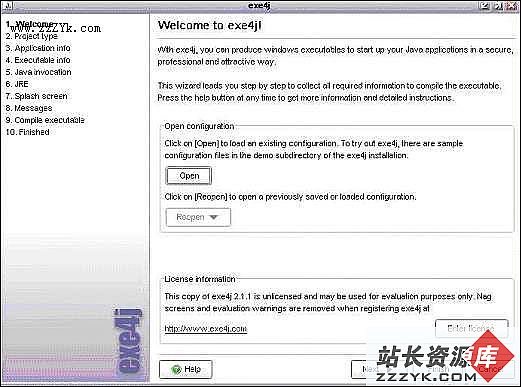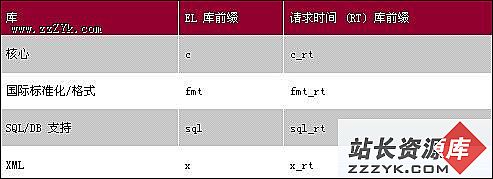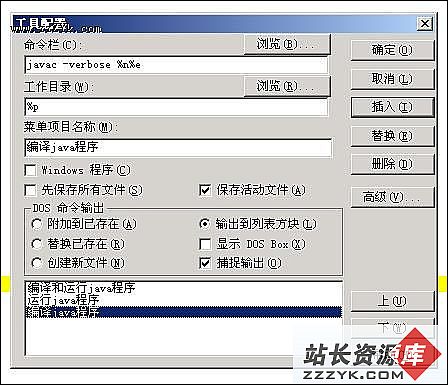当前位置:编程学习 > JSP >>
答案:This is a moderated forum.
MDR-EdO: Welcome to today's chat on JavaServer Pages 2.1 technology and JavaServer Faces 1.2 technology. The next release of JSP technology, JSP 2.1, and the next release of JSF technology, JSF 1.2, are designed to improve the alignment of these two technologies in the area of expression language, and to enhance their ease of use. In today's chat, you'll be able to ask questions about these new technology releases and get responses from Mark Roth, the co-specification lead for JSP 2.1, and Roger Kitain, the co-specification lead for JSF 1.2. Our guests are ready, so let's begin. Mark and Roger, can you start by giving us a brief rundown on what's new in JSP 2.1 and JSF 1.2?
Roger Kitain: The JavaServer Faces 1.2 technology release provides a minimal enhancement of the JavaServer Faces 1.1 specification. Its expert group was formed in September 2004. It is not a new feature release. Its primary goal is handling the Faces side of the JSP/Faces alignment issues addressed in the parallel JSR 245 (Java Specification Request 245). Please consult that JSR for details on the primary goal. Following is a list of secondary goals that will be addressed only if the primary goal is reached, and only if the enhancements can be addressed without delaying the schedule.
provide an interim solution to the content-interweaving problem
provide an XML Schema for the config files, instead of using DTD
allow faces applications to handle multi-frame or multi-window UI designs
enhance the f: tag library for improved TCK coverage, f:view lifetime events, and other minor features
enhance the decorator support for API objects
enhance security for client-side state saving
solve the "duplicate button press" problem
reorganize the spec into normative and non-normative sections, to make implementation easier
implement portlet-related bug fixes
implement bug fixes that require minimal spec changes
Mark Roth: The JSP 2.1 specification is being developed under the JCP (Java Community Process) as JSR 245, as mentioned. The expert group was formed this past May; it's been a pleasure working with some of the greatest minds in the industry to bring you the next release of JSP. The focus of JSP 2.1 is on three things: alignment, ease of development, and a more open process. The major news in the Java 2 Platform, Enterprise Edition (J2EE platform) web tier since J2EE 1.4, has been the standardization of a user inte易做图ce component model for pages that model interactive forms—that is, JavaServer Faces. Due to time-to-market considerations, Faces 1.1 was designed for JSP 1.2 and therefore could not take advantage of newer JSP features. It also meant that JSP could not be changed to meet Faces' needs. This resulted in a number of peculiarities, such as a different expression language syntax and difficulty "interweaving" Faces tags with JSTL tags. The alignment of JSP, the JavaServer Pages Standard Tag Library (JSTL), and Faces is our primary focus in JSP 2.1. The primary theme of the J2EE 5.0 platform as a whole is ease of development. JSP 2.0 and Faces 1.1 have already made large steps towards easing development using the J2EE web tier, but there is always more to do. Finally, in the spirit of JCP 2.6, the JSP and Faces specifications are pioneering a more open process. We now have public issue lists and forums on java.net for our respective specifications, to make it even easier for you to provide feedback!
Webster: When will the specs for these technology releases be available for public review? The JSR page says Public Review: November 2004. Also, because the JSR describes this as "not a new feature JSR," when will JSF be functionally enhanced?
Roger Kitain: The JSF 1.2 (EDR) specs will be available for public review this week. JSF 2.0 will be available after we complete 1.2.
Webster: In an article earlier this year on the O'Reilly site, Hans Bergsten identified a number of anomalies regarding the interplay of JSF and JSP. For example, he showed that the two text strings below will be generated in reverse order (that is, "Some more text" before "Some text"):
<h:panelGroup>
<h:outputText value="Some text" />
Some more text
</h:panelGroup>
Will anomalies like this be addressed in the new release?
Roger Kitain: Yes. This is known as the "content interweaving" issue. It will be addressed in JSF 1.2. This problem is centered around when the component tree in JSF is created.
Matt Raible: Is there any chance that web frameworks (like WebWork) could override the default settings for the EL? So ${myForm} can look in areas other than page/request/session/application scope—that is, WebWork's ValueStack.
Mark Roth: Good question, Matt. Actually, JSP 2.1 is not only concerned about supporting Faces. We want also to support other frameworks. The new unified Expression Language (EL) 2.1 API supports the concept of a pluggable VariableResolver (similar to the one that Faces has), which allows you to plug in your own logic for how variables like ${myForm} are resolved. So yes, this will be supported.
dpl: Considering the significant changes that you are proposing in JSF 1.2, would you recommend waiting to start using JSF for new projects?
Roger Kitain: Depending on your timeline or requirements, for starting your new project, you can wait. But nothing, of course prevents you from playing with 1.1.
heath: Currently, there is a gap between "required" messaging needs and the parameters supplied to the default "required" message by javax.faces.component.UIInput. Preferably, there would be a "label" or "description" property added that would be passed to the default message. What is being done to address this issue?
Roger Kitain: Are you talking about error messages? In particular?
staticvoid: Does the alignment of JSF 1.2 and JSP 2.1 mean that, from JSF 1.2 onward, JSF will not work with earlier versions of JSP?
Mark Roth: To clarify, you have the option to use Faces without JSP and that will not change going forward. JSF 1.2 will depend on the unified EL API, which is delivered as part of the J2EE 5.0 platform. So yes, it is true that from JSF 1.2 onward, JSF will not work with earlier versions of JSP. This is no different than, for example, JSP 2.0 not working with versions of Java Servlet earlier than 2.4.
iwaneising: JSF was also meant to have a standard for TAGLIB support in IDEs (like the Sun Java Studio Creator IDE), but there is no standard for design-time support of JSF components. Every IDE has its own extensions. Will JSF 1.2 provide a standard so that you can use any JSF 1.2 component in any IDE in a WYSIWYG manner, like Java Studio Creator's components currently?
Roger Kitain: Our expert group has been involved in design-time support discussions. I think the bulk of this will be addressed in JSF 2.0.
CandidateAdvisor: Will there be any work on better support for the "redirect" pattern? Namely, support to retrieve FacesMessages after a navigation redirect?
Roger Kitain: This may be addressed further on in JSF 1.2, but most probably in 2.0.
RobCo: The forum has a huge percentage of questions and problems going unanswered, and there seems to be little to no participation by major stakeholders on the Sun side. When will that change?
Mark Roth: I assume you're referring to the Java forums. We do periodically scan these forums and answer questions, and we use the questions that appear in these forums to help guide our work on our products. Due to the volume of questions, it is difficult for Sun to answer all questions. For example, the JSP forum alone had 113 messages today so far! While I'd personally
上一个:JSP WEBServer的实现原理
下一个:Jsp数据分页
- 更多JSP疑问解答:
- jsp新手求指导,不要笑!
- 如何让一个form提取的值传递给多个jsp?
- DW中,新建的html页面能否有jsp或php代码?
- jsp 如何限制表单,实现只能填写特定的数据。
- jsp 和javabean结合的程序有问题
- 从数据库里取出的数据如何传递到另外的jsp页面中
- 你好,ext嵌入那个jsp页面,是不是还需要加上一些插件啊,不太懂,麻烦你了。
- JSP不能处理所有问题吗?还要来一大堆的TLD,TAG,XML。为JSP 非要 Servlet 不可吗?
- 光标离开时全角转半角在jsp中怎么实现
- jsp 页面 打开 pdf 文件 控制大小 和 工具栏 能发份源码么 谢啦
- jsp页面点保存按钮,运行缓慢,弹出对话框提示
- jsp刷新页面如何不闪屏
- jsp 与html 的交互问题?
- jsp小数显示问题 例如 我在oracle 数据库中查询出来的是 0.01 但是在jsp页面上就显示成 .01 没有前面的0
- jsp中日历控件





